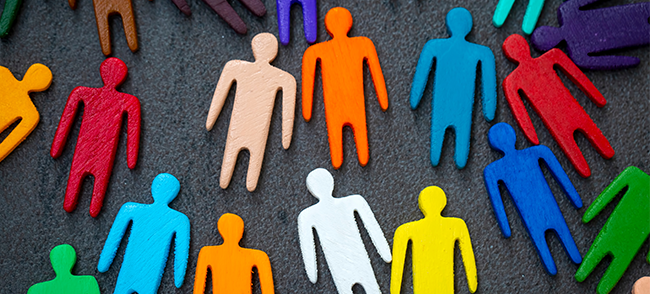
This much I know: 9 leadership lessons from global CEOs
From absorbing stress to finding your authentic voice, nine leaders of global companies share the wisdom that has helped them excel in their roles. ...

Published January 22, 2025 in Brain Circuits • 3 min read
Many companies use out-of-the-box solutions to increase diversity and inclusion that fail in practice – and often they don’t know why. There’s no point trying to implement a new measure without gauging its success, because you won’t know what works and what doesn’t. To succeed, any DE&I initiative must connect human understanding with data analysis.
The solution to changing behavior is to adopt a data-driven approach. The data helps you create a baseline of where you are and where you want to go. Knowing this, you can reverse-engineer the milestones that need to happen to achieve your end goal.
In terms of DE&I approaches, a “nudge” is really a gentle push that helps people see what behavior to adopt. This consists of breaking down desired outcomes into a series of steps and encouraging the right action at the right time that will align with the individual or organizational long-term goal.
Using data to combat unconscious bias can bring big diversity benefits, beginning with the hiring process. Ask all candidates a list of questions and share it with all colleagues, then share all the feedback on the candidates with everyone at the same time, so no one starts a conversation talking about their impression of an individual candidate. Besides improving the way in which you see candidates and their potential, this also improves the way in which you communicate with your employees.
Formal unconscious bias training often has limited impact because it triggers defensive reactions in people. To avoid this, encourage leaders and managers to think positively by asking themselves questions such as, “How can I become a better version of myself? How can I be a better leader?” Put the focus on personal growth and give people the tools to understand internal processes, such as individual position-taking, so they become aware of their biases, then give them the tools to make better, de-biased decisions.
DE&I is not simply a question of fairness. Done right, making small changes to increase diversity and inclusion will help debias your organization, attract diverse talent, manage everyone better and make more money.

July 10, 2025 • by Jean-François Manzoni in Brain Circuits
From absorbing stress to finding your authentic voice, nine leaders of global companies share the wisdom that has helped them excel in their roles. ...

July 8, 2025 in Brain Circuits
According to the World Health Organization, depression and anxiety cost the global economy $1tn each year, predominantly from reduced productivity. Here are six simple habits, taken from design thinker Vishakha Singh’s SHIFT...

July 4, 2025 • by Rachel Polla in Brain Circuits
How many times did I secretly wish for my father to leave the business and leave me the sole “Queen” on board? Ten years later, I cannot imagine working without him by...

July 3, 2025 • by Eric Quintane in Brain Circuits
Entrepreneurial talent who work with other teams often run into trouble with their managers. Here are ways to get the most out of your ‘boundary spanners’...
 Audio available
Audio availableExplore first person business intelligence from top minds curated for a global executive audience